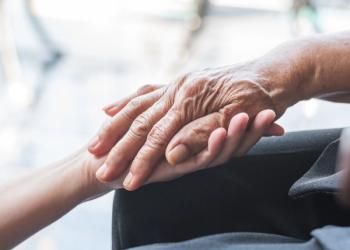
- Vol 33 No 7
- Volume 33
- Issue 7
Preconceived Notions
I will always remember her. I was honored and inspired by a very beautiful, strong, and unusually graceful young woman.
It was many years ago, when I worked in a busy teaching hospital, that I met with her. I was scheduled for multiple intake evaluations that morning. It had been a stressful week for the staff at the clinic: we were having problems getting paper files to arrive before scheduled appointments, which caused significant strain on the clerical staff and resulted in physicians entering into exams “cold” ie, with no medical history-a particular disadvantage in psychiatry. It was after one of the Gulf Wars had begun, and the typical intake evaluations involved combat exposure. Women patients were not so routine at that time; when I read the ambiguous Asian name and age, I assumed his issues were war related, like all of the younger patients we were seeing at that time.
I went to the waiting area and called the name. She was a young, attractive Asian woman, dressed smartly in a business skirt and jacket, wearing hose and blouse, scarf, pumps. She sat with erect, formal posture in her chair, and appeared out of place sitting among the generations of hardened male patients, some with canes or service dogs. My first thought was that she reminded me of a model from the 80s . . . what was her name? As she drew back her hair, I noticed a misshapen ear-a birth defect?
It was her first evaluation at this facility. I needed to obtain her entire history, including all the evidence needed to make a clear argument for any symptoms being related to her federal service, to support her claim. I had done these evaluations for a few years, and felt efficient. I rarely kept patients waiting.
After introducing myself and orienting her to the nature of the exam, getting the basic information about her service history, I told her the unfortunate reality: that I had not received her paper file as yet. The stylish woman sitting with her legs folded business-fashion suddenly slumped over in her chair in disappointment. I apologized for the inconvenience, reassured her that I would get her file in the next day or two, explained our systems dilemma with paper charts. I rationalized that “all it meant was a little more for us to talk about,” so that I understood her history completely and did not miss anything. She was silent for a long time. Then, she looked up, made direct eye contact and asked simply, “Could I just show you?”
I was confused. It was an unusual question, and I had no idea what to expect. Of course I wanted her to feel comfortable, in control. Still, I needed to obtain a lot of information and the clock was ticking. I had another patient scheduled immediately after her appointment. What did she mean by this unusual request?
“Oh, yes, of course,” I said, preparing my notepad. She heaved the heaviest sigh I had heard in a long time, then slowly and deliberately stood up out of her exam chair. Ever so slowly, she took off her blazer and placed it gingerly on the chair. She removed the scarf covering her neck and pulled up her silken blouse, carefully unbuttoning all of the buttons. She gracefully removed each arm from the blouse, as her fingers began to faintly tremble. As she stood there in her bra and skirt, still in her pumps, I contained my own gasp. Her neck, back, and hips were a jumble of long, discolored, raised but well-healed scars, disrupting her otherwise porcelain skin. She stood there, and as tears started to well up, I asked her softly, “What happened to you?”
“My partner did this to me,” she said, as tears slowly flowed down her cheeks. I stood up and offered her blouse. “It’s OK,” I said, “you’re here now.” She put her blouse and jacket back on, wiped her tears, and sat down. Another heavy sigh came forth.
“Help me understand what happened,” I said. And then the story came. She lived with a man on base. He had some problems with authority, got in trouble a couple of times, had been in rehab treatment. At one point he started to become violent. She was concerned for her safety. They had tried couples counseling. Nothing seemed to work. She filed a restraining order, had the door locks changed in their small apartment. Then one night, her life changed forever.
She had gone to bed early. She had read her children bedtime stories, and they were asleep in the bedroom near hers. Hours must have passed, when she was awakened by a stabbing pain. The last thing she remembered was someone attacking her. She woke up in the ICU.
Her partner had stabbed her multiple times. She suffered deep wounds requiring surgeries and prolonged hospitalizations. Her neighbors heard the screams. Miraculously, her children were unharmed.
“When I was in the hospital, all I could think about were my babies, and, how did he get into the apartment?” she said. She recalled being “hysterical with worry” upon waking, until she could see for herself that her children were OK. It took months in the hospital for her to recover. While she was hospitalized, the children stayed with the woman’s parents. Her partner faced trial.
When her medical file arrived days later, it was surprisingly not much help to me. Due to the legal nature of the proceedings and the privacy rights of her partner, no details of the crime were evident. The only written evidence to support her story was an emergency room triage note, which I might easily have missed in a brief review.
The most valuable evidence I obtained was the removal of my patient’s blouse, so I could see the extent of the injuries firsthand. How often does a psychiatric patient choose to disrobe rather than describe violence or domestic abuse, I wondered? She suffered from symptoms of severe PTSD, particularly with insomnia and nightmares, as she still found it difficult to trust that she and her children would really be OK, asleep, through the night.
This woman’s domestic abuse and resulting examination occurred many years ago, before common use of electronic health records or development of the current sexual trauma protocol, which helps support victims of sexual and domestic violence suffered during their service careers. In retrospect, my patient was fortunate that she was randomly assigned a female examiner-not a common practice at the time, but which may have helped her feel more comfortable revealing her injuries.
What did I realize? Stuff I thought I already knew. Maybe I needed reminding. First: ignore any preconceived notions-ie, be open and flexible. Sometimes, to honor the patient, processes need to be interrupted. Most encounters are rarely what we expect. Next: the most valuable tool we have as psychiatrists is the ability to listen-with all of our senses. We never really know what will come up when we open a patient’s treasure chest of emotional history. To be ultimately available, we need to be prepared to surrender any planned script for our interviews . . . clinic protocols and schedule constraints be damned. And compassion, compassion, compassion!
Most of all, I was reminded once again of the strength and resilience of the human spirit. I will always remember her. I was honored and inspired that day, by a very beautiful, strong, and unusually graceful young woman.
Disclosures:
The author, a former staff psychiatrist, wishes to remain anonymous to further protect her patient’s identity.
Articles in this issue
over 9 years ago
Powerful Stories-Winners of Our Writer’s Contestover 9 years ago
The Mirrorover 9 years ago
Foster Careover 9 years ago
Discussing and Assessing Capacity for Sexual Consentover 9 years ago
Vaginismus: “Gone” But Not Forgottenover 9 years ago
Pedophilia: Interventions That Workover 9 years ago
Soul and Soma: Let’s Drink (Tea) to That!Newsletter
Receive trusted psychiatric news, expert analysis, and clinical insights — subscribe today to support your practice and your patients.




